Table of content
Black Friday has been a controversial subject for the past few years. Some customers see it as a celebration of mindless consumption, while others perceive it as an opportunity to acquire items and services they want or need at a significantly lower price.
One thing’s certain – e-commerce stores should always consider this time of the year in their marketing strategies. However, there are many nuances to remember when designing the Black Friday campaign and activities.
When should businesses consider jumping on this sales wagon, and when is it not the best idea? What is the best moment to start preparations? How to execute campaigns to see the expected results?
If you want to explore this topic in the video form, watch the session below:
Understanding the Landscape: To Invest or Not to Invest?
The Black Friday phenomenon has evolved into a global shopping extravaganza, and businesses need to evaluate if participating in it aligns with their objectives. While the potential for increased revenue is undeniable, it’s crucial to weigh the pros and cons, considering factors like industry, target audience, and budget.
Let’s check out the statistics. In 2021, Polish consumers bought electronics, clothes, shoes, health and beauty products, as well as hotel bookings, plane tickets, and furniture. These categories of online stores should always prepare deals for Black Friday because consumers expect them to do it. E-commerce multi-brands and large shops have to play according to the market rules and race their competitors during this special time of the year.
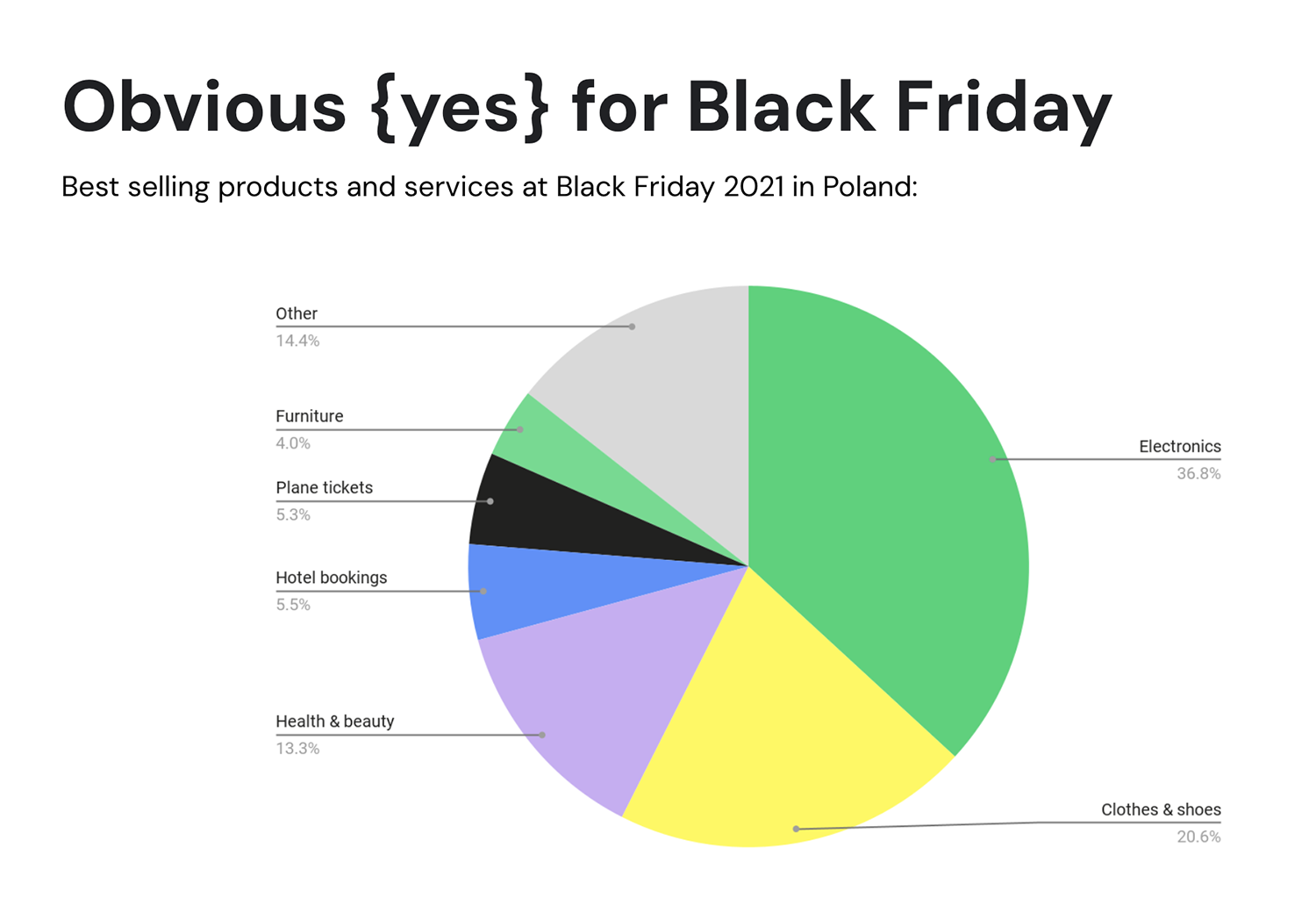
We’ve analyzed our clients’ marketing campaigns run for Black Friday, and we’ve discovered that advertising at the end of November became quite expensive. Statistics show that the cost per mille (CPM), which means showing the ad to 1000 users, grew by 44%, and the cost per click (CPC) by almost 35% during that time.

That’s why smaller players should always analyze profitability and ROI before they invest in Black Friday marketing. However, a well-executed campaign during that time can reduce the cost per sale (CPS) from 25% to even 90%! We talk about how to achieve that in the further part of this article.
Who Shouldn’t Invest in the Black Friday Campaign?
We’ve taken a closer look at the industries and sectors that might not benefit from bold, incautious Black Friday moves. Here are our conclusions:
Online educators:
This is the first business niche that should think twice before they bet on enormous Black Friday discounts. If online educators offer pre-recorded courses that can be combined into bundles, they can use the occasion to convert their warm leads.
Nevertheless, premium programs and expensive live courses can be sold using better techniques than giving a Black Friday promo code. Such products require a lot of work beforehand, including audience education, and should be sold in sales rounds, with gradually increased prices.
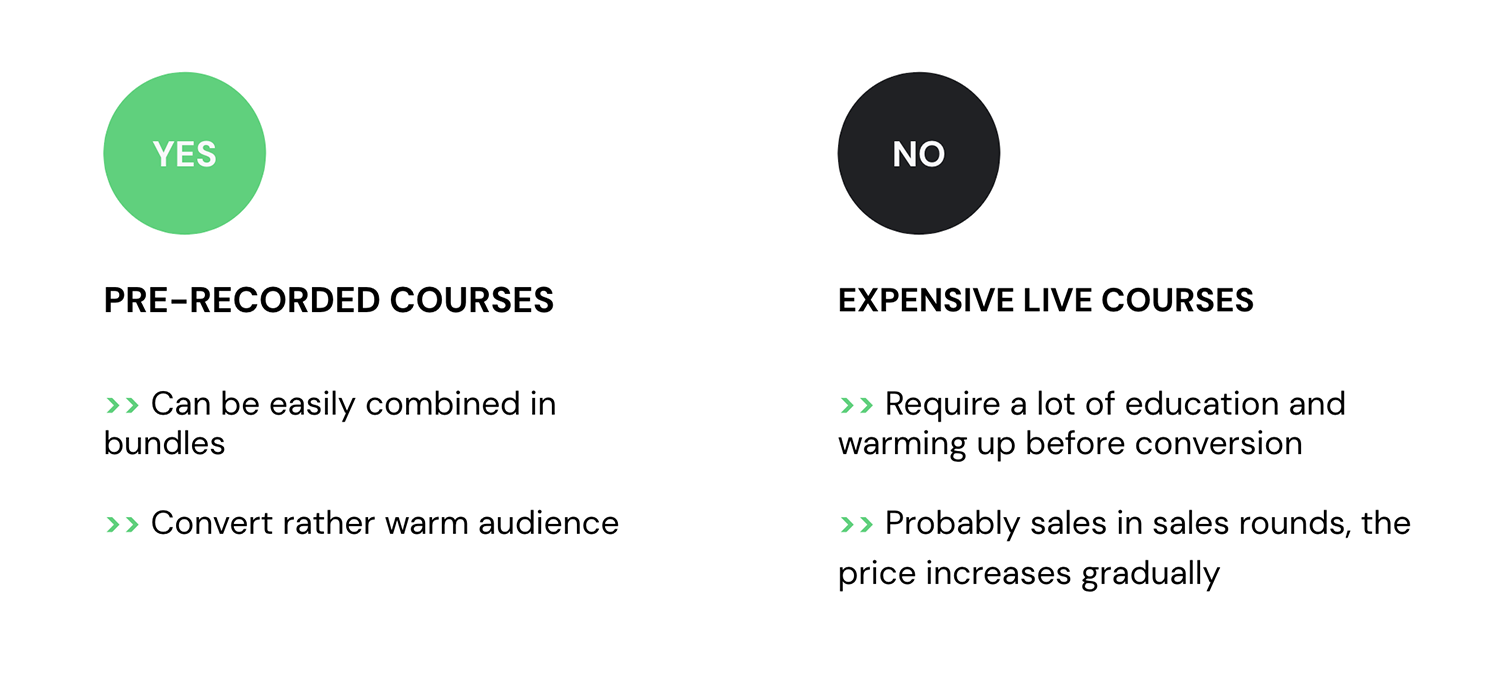
Eco-aware brands:
Black Friday is dangerous territory for companies that want to be perceived as responsible, sustainable, and environment-friendly. Generating unnecessary consumption and producing additional waste won’t be appreciated by their aware customers and could harm the brand’s image.
Thus, our recommendation would be to use Black Friday campaign as a chance to educate, spread the message about business values, and showcase better practices. Fun fact: We’ve observed that such an approach still generates additional sales. Also, digital projects that sell online products can provide festive discounts without negative connotations.
Brands that can’t maximize LTV:
Customer lifetime value can’t always be increased by successful Black Friday sales. Seasonal products that can be used for a long time are a great example. Such an e-commerce store will invest a lot into marketing and generate a lot of sales but won’t have a chance to gain returning customers or upsell.
It’s important to know if buyers will come back at some point next year, or if they will just spend money once. Hiring someone to handle more orders to let them go soon after is not a good business decision.
E-groceries:
And all the products that can’t be easily accumulated at home for future use. A simple promo code is enough to gain a competitive advantage during Black Friday, but investing in sophisticated campaigns is not the best move. Simply because such products are not in the interest of discount hunters and Black Friday enthusiasts.
6-Step Formula for Winning Black Friday Campaign
We will walk through each stage of the Black Friday marketing activities to showcase our recommendations and strategies. We’ve tested them on our clients with good results. The whole process will be based on a timeline because planning and executing campaigns during this time of the year is a marathon, not a sprint.

Step #1: Gathering and Warming Up the Audience
Should Black Friday activities be planned earlier? Definitely. Should campaigns start sometime before the actual event? The answer is also yes.
To reach more clients, build anticipation, and maximize results, some stores begin their Black Friday efforts on the first day of the month or even in October. Since the rise of the internet, the actual Black Friday extends to Black Week, Black Weekend, and Cyber Monday, giving sellers extra opportunities to provide great deals for their customers at the end of November.
Since people usually have limited budgets for Black Friday spending, building brand awareness has one goal – to be the first company that the customers will think of when they decide to shop. Spreading the budget equally between awareness goals and lead generation allows e-commerce stores to gather an audience before informing about custom promos. They should also raise knowledge about their Black Friday offers early on.
Anticipation Campaigns
Exposure is crucial to converting warm leads instead of cold, which can be more expensive and difficult. Anticipation campaigns allowed our clients to gain approximately 200% growth year-to-year. They are run after the ordinary brand awareness campaigns, usually 7–10 days before Black Friday.

A few rules of thumb:
- A landing page is nice to have – great for traffic and generating leads.
- Collecting emails is crucial to informing about special offers and reminding about the promotional campaign.
- Paid ads are necessary to gain new leads.
- A great practice is to motivate customers to collect products in their carts earlier so they can be ready when the campaign starts.
Step #2: Converting First Leads with Pre-sales Campaign
Early Bird campaigns, that happen 2–4 days before launch, proved to be extremely successful. It’s essential to offer discounts and deals that are even more attractive than the actual Black Friday promo offer. Early access not only increases the chances of conversion but also makes customers feel valued, especially when dealing with limited stock scenarios.
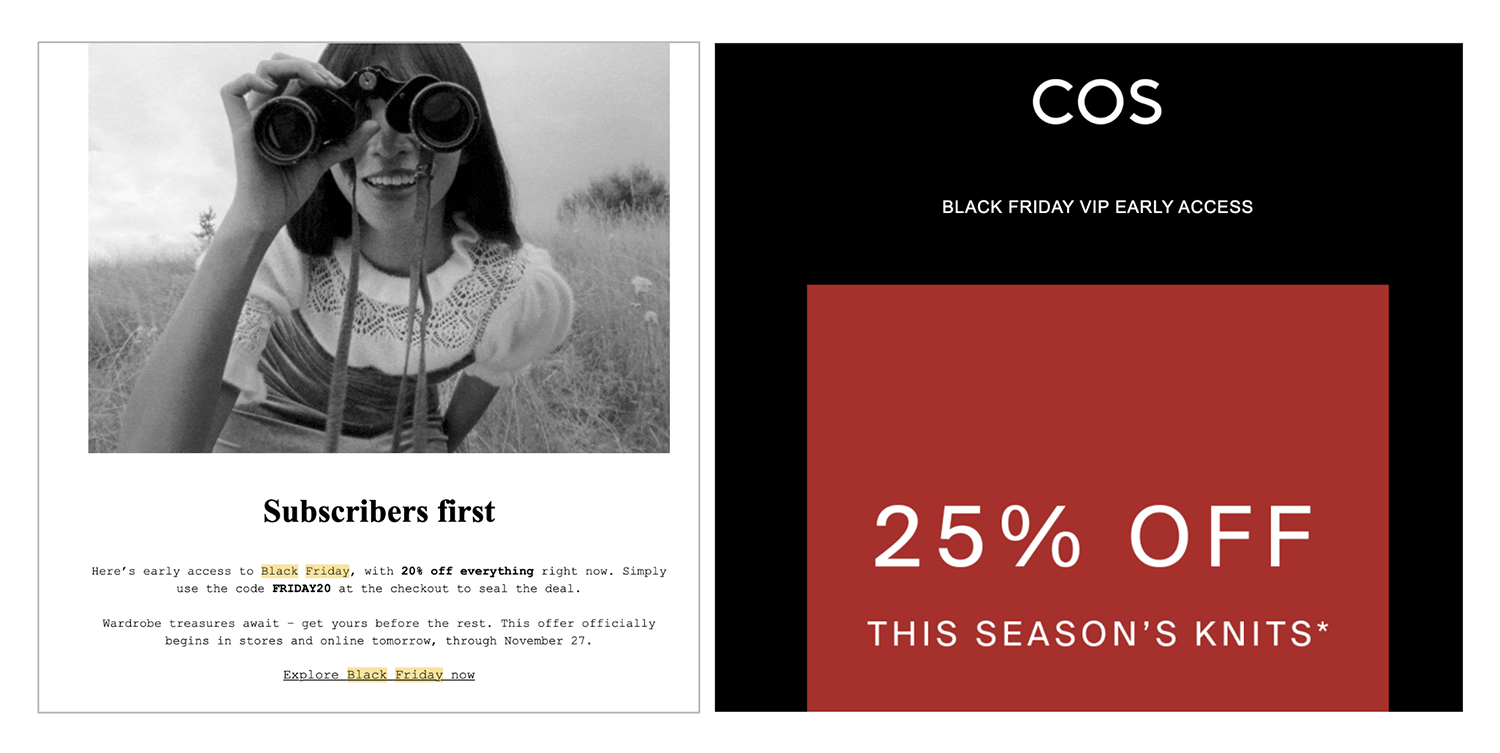
Besides email and ads, text messages are also a great medium to incorporate in Black Friday campaigns. All these efforts can lead to a 22-40% conversion during the Early Bird stage.
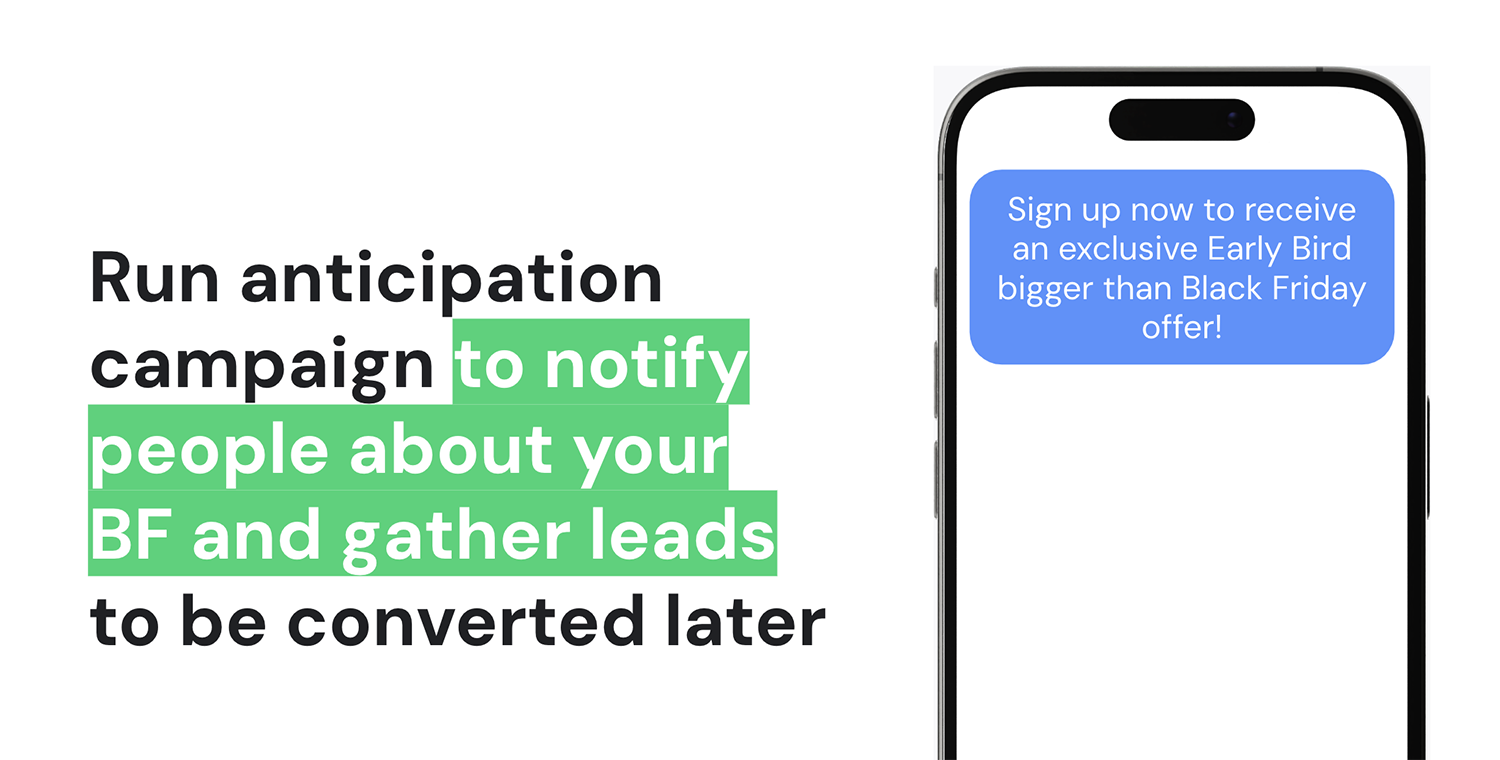
Step #3: Preparing Ads Before Launch
At this point, it’s important to set up ads earlier because they need to be improved by the platform. For big events like Black Friday, our recommendation would be to start even a week in advance to be sure everything’s in place. The ideal audience for Google and Meta should be bigger than 1000 to avoid data gaps and misleading reports.
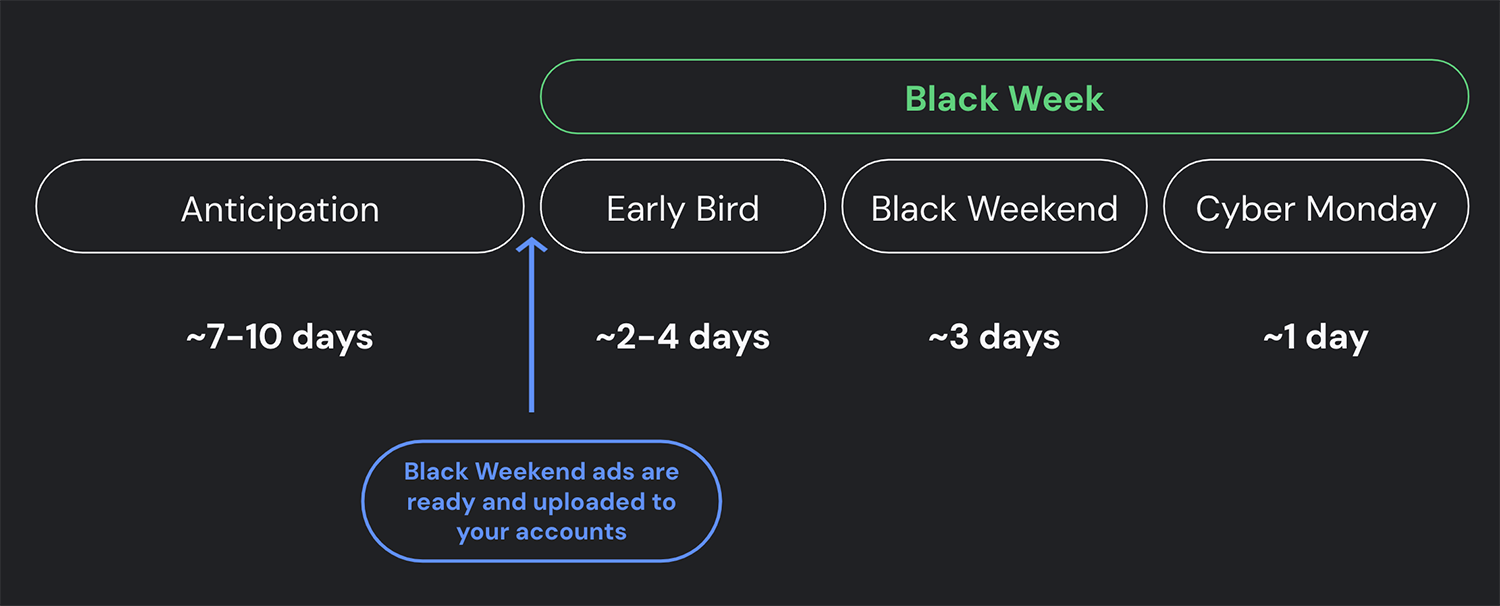
Step #4: Delivering an Irresistible Offer
The discount offered for Black Friday will depend solely on the type of business, products sold, and other factors, but it should be one of the best deals of the year. Our advice is to consider Lifetime Value when designing the perfect Black Friday discount. Crafting offers that look and feel good is the best way to maximize LTV.
For example, giving discounts for long-term subscriptions provides more opportunities to bond with the buyer and convert them again in the future. Bundles are also considered to be great for Black Friday, especially for products that are not as popular or could be outdated soon. They usually allow stores to cut delivery costs, increase average order value (AOV), and can be marketed in creative ways.
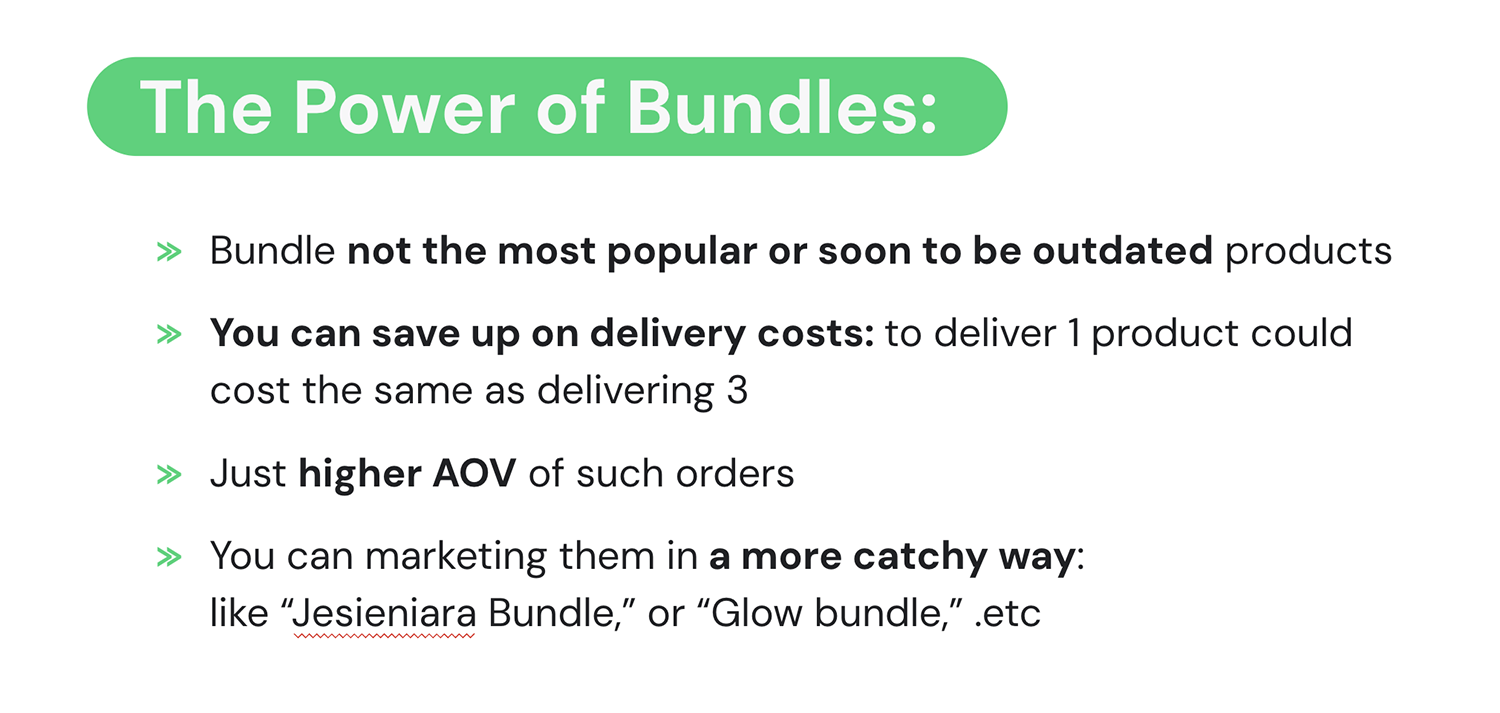
Other practices include:
- Introducing minimum order value
- Offering free delivery threshold
- Preparing unique offers like a half-year subscription plan, lifetime access, a full collection of courses, etc.
- Gifts added to a limited number of orders (generates FOMO)
- Using wordplay, eye-catching numbers (e.g. 9 for $9.99), and CTAs
PortalYogi Case Study
One of our clients, a Polish VOD yoga platform – PortalYogi, offers subscription plans for 1-month, 3-month, and 12-month access. We’ve observed that the best Black Friday practice in their case was to provide a discount only for the most expensive, yearly plan. However, we’ve decided to test another solution – an exclusive 6-month access plan. It proved to have the longest lifetime value of all Black Week proposals.
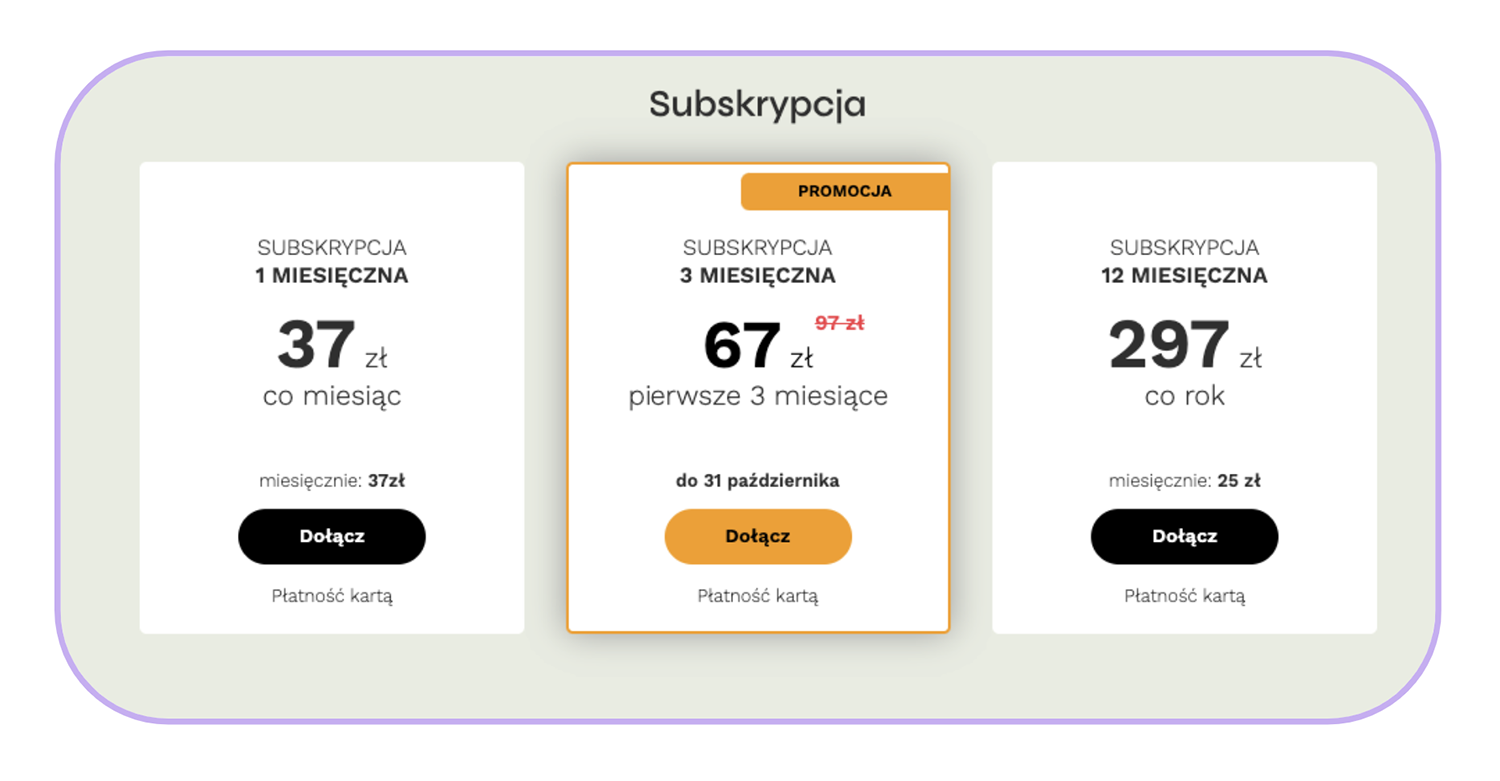
Moreover, the brand decided to use Cyber Monday as a chance to increase conversion volume and gave their undecided leads a promo code for a 1-month subscription. This way, they could give a sample of their product for a lower price and get opportunities to build connections with more customers.
Step #5: Prolonging the Party with Cyber Monday
Overlooking the potential of extending Black Friday campaigns into Cyber Monday is a mistake. Some companies even turn Cyber Monday into Cyber Week for even higher profits. However, at this point, it can be quite tiring, so usually it’s only one or two days.
There are two approaches to this last stage – one is to prolong the same offer, and the other is to create a different offer. The former requires less work and can be used to play the “last chance” card with customers. The latter is a great chance for upselling or converting an audience that didn’t like the first offer.
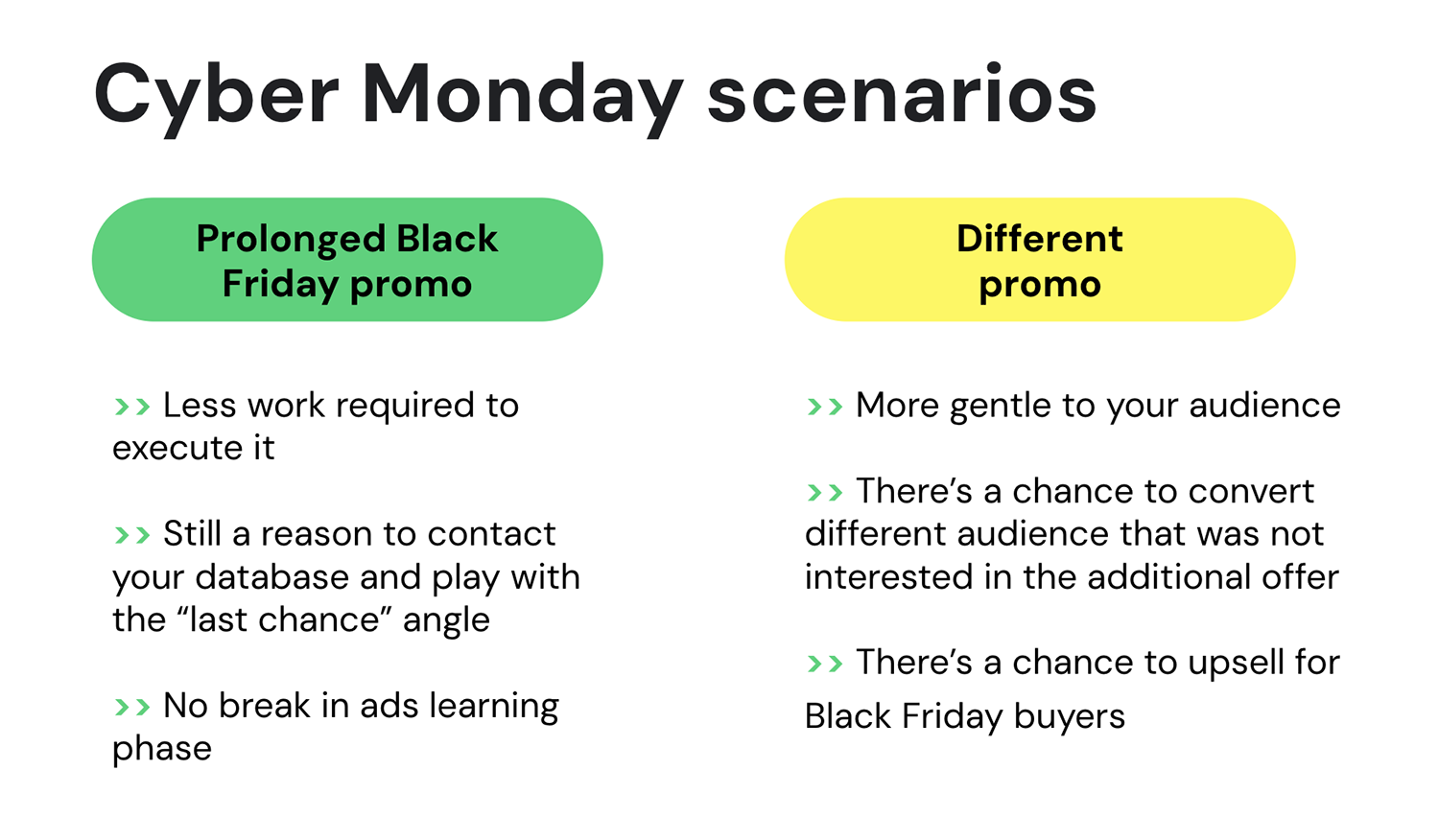
Step #6: Maximizing LTV of Black Friday Customers
Depending on the industry, upselling chances can come again during different parts of the year. For the fitness industry, the beginning of the New Year is usually when they can provide fresh discounts to increase LTV. The most important thing is to not forget about the buyers and build relations with them for long-lasting, satisfying relations.
Interesting Facts to Remember During Black Friday
Before we finish this article, we wanted to showcase two statistics that can influence some decisions, especially during the preparation phase. The first one is that “Buy Now, Pay Later” solutions like Klarna or PayPo are becoming extremely popular during Black Friday and the Holiday season. In 2022, the increase reached up to +78%. This means that introducing such a payment method to an e-commerce store could be a smart move.
Second of all, 48% of all e-commerce conversions during Black Friday occur on mobile devices. That makes optimization an essential factor for online shops. The mobile channel is usually the first point of contact for many customers, and it will only grow in the upcoming years. Having all channels set up properly and tested before the campaign is a must to not experience any disruptions.
Crafting Your Winning Black Friday Campaign Formula
Black Friday campaign offers immense opportunities for businesses, but success depends on a well-thought-out strategy. By incorporating proven advice and tactics, you can navigate Black Friday endeavors with confidence.
Of course, we always recommend tailoring the approach to unique business needs and industry specifics. This way, companies can truly increase their revenue during Black Week, while also gaining loyal clients and building their brand’s positive image.




